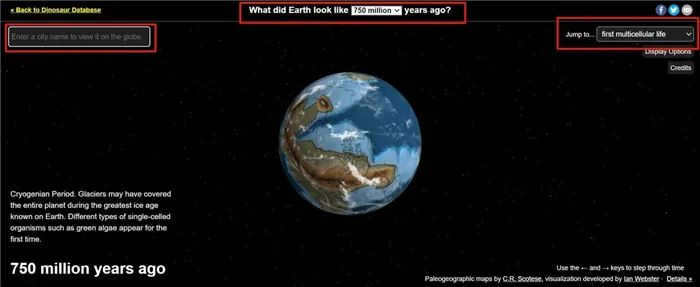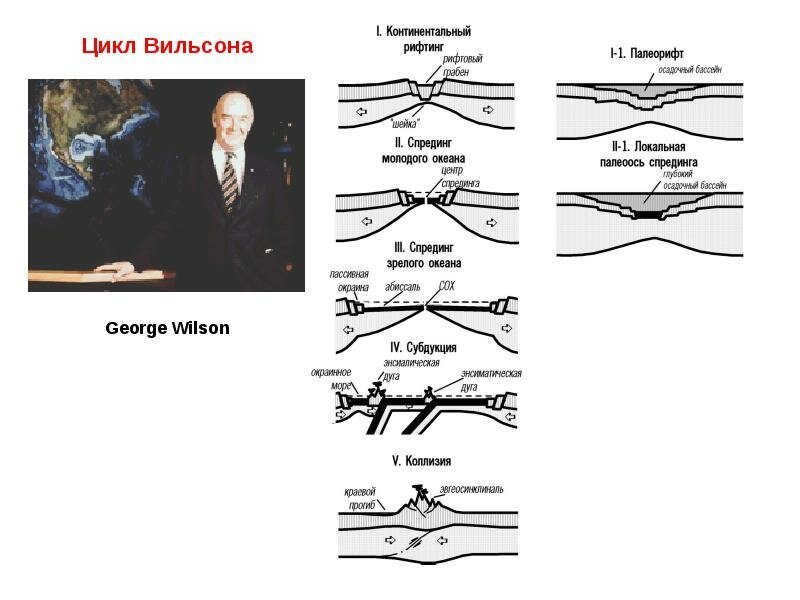
In order to fully comprehend the main subject matter of the article, it is necessary to delve into the historical context and acquaint oneself with certain particulars. As time progresses, the climate on the planet undergoes changes in accordance with the Wilson Cycle: the overall temperature gradually decreases, ushering in the Ice Age, then the climate gradually warms, and so forth in a continuous cycle. The entire cycle may require millions of years to reach completion.
Did you know? Scientists hypothesize that our current era is actually another Ice Age due to the presence of snow caps at the planet’s poles, which typically disappear during periods of intense warming.
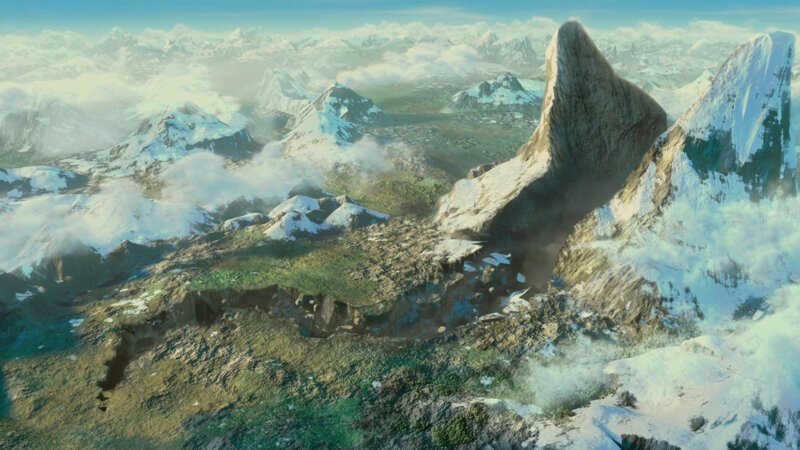

The Wilson Cycle is a result of the ongoing movement of the continents. It is hypothesized that the continents have repeatedly collided to form a single supercontinent, such as Pangaea, and then separated again. These continental shifts have a profound impact on the planet’s climate. During periods of continental convergence, the weather becomes increasingly warm, and during periods of divergence, temperatures drop and the planet gradually enters an Ice Age.
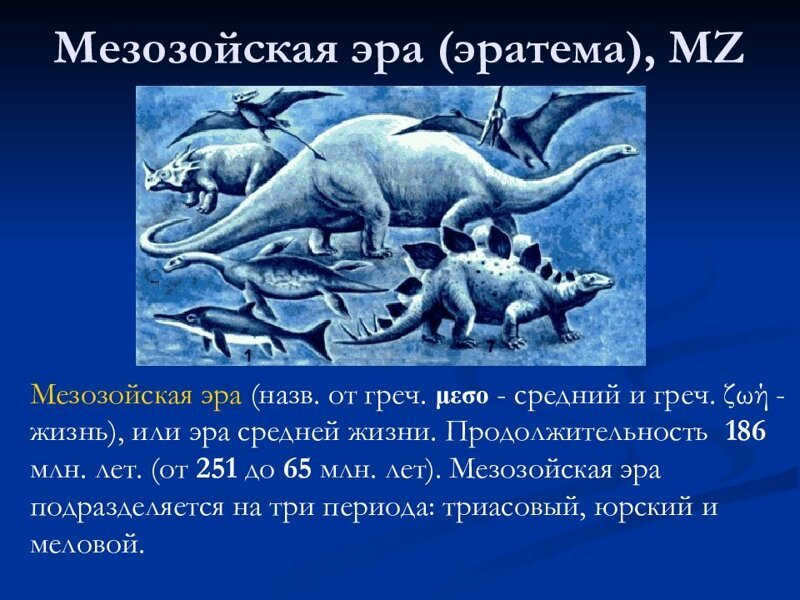
To track the alterations, it is beneficial to examine each epoch of the Mesozoic Era individually.
A fascinating detail: on an annual basis, North America gradually moves apart from Europe by a distance of 8 cm. Consequently, over the course of 100 million years, the gap between the two continents will expand by 8,000 km.
The Triassic Period, which occurred 251 – 201 million years ago, was a time of significant geological and biological changes.
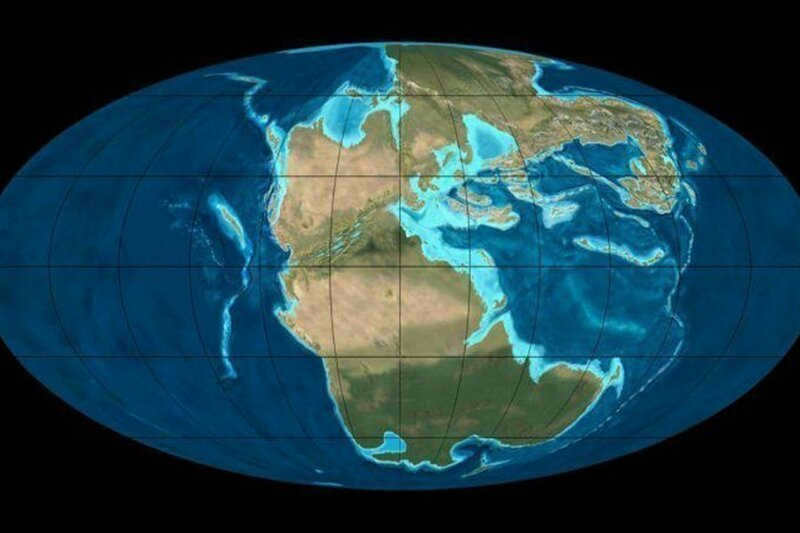
Prior to the Triassic era, the planet Earth consisted of a single supercontinent known as Pangea. The Triassic period marks the beginning of the continental breakup. During this time, the planet was already inhabited by the earliest dinosaur species.
The climate of the planet was generally warm. Even in the coldest regions, temperatures only dropped a few degrees below freezing. Near the equator, temperatures could soar up to 50 degrees Celsius. Most regions were tropical, supporting the growth of numerous fern species. Although rainfall was scarce, the arid climate did not hinder the spread of vegetation.

On the Earth’s surface, the dominant forms of life during the era of the dinosaurs were reptiles, including various species such as notosaurs, ichthyosaurs, placodonts, and asceptosaurs. However, the majority of diverse life thrived in the vast ocean that surrounded the supercontinent Pangaea. Within this ocean, there were thriving populations of large predators, as well as ongoing development of mollusks, algae, and other organisms. As the inland seas gradually dried up and the remaining seas became more concentrated with salt, it posed additional challenges for the creatures that inhabited the land.
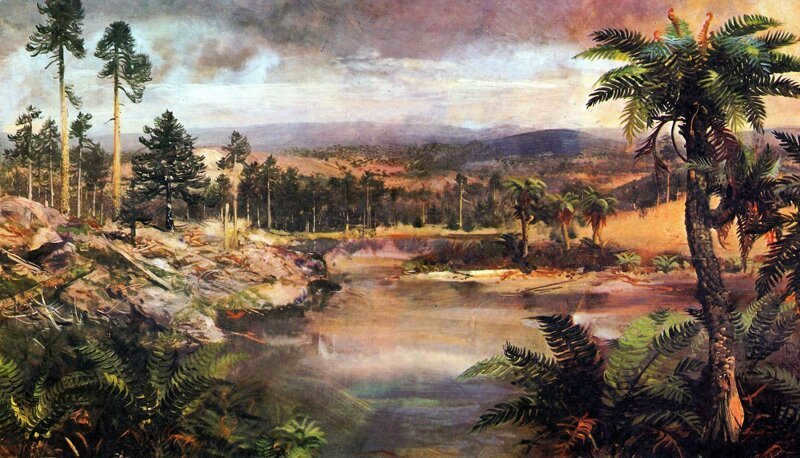
During the transition from the Permian to the Triassic periods, a significant event known as the Permian extinction took place, resulting in the loss of approximately 25% of marine animal species. This extinction event is believed to have been caused by the shifting of the continents, which led to significant changes in the structure of the oceans. As a result, terrestrial organisms were able to gradually gain an evolutionary advantage over their marine counterparts.
The Jurassic era, which spanned from 201 to 145 million years ago
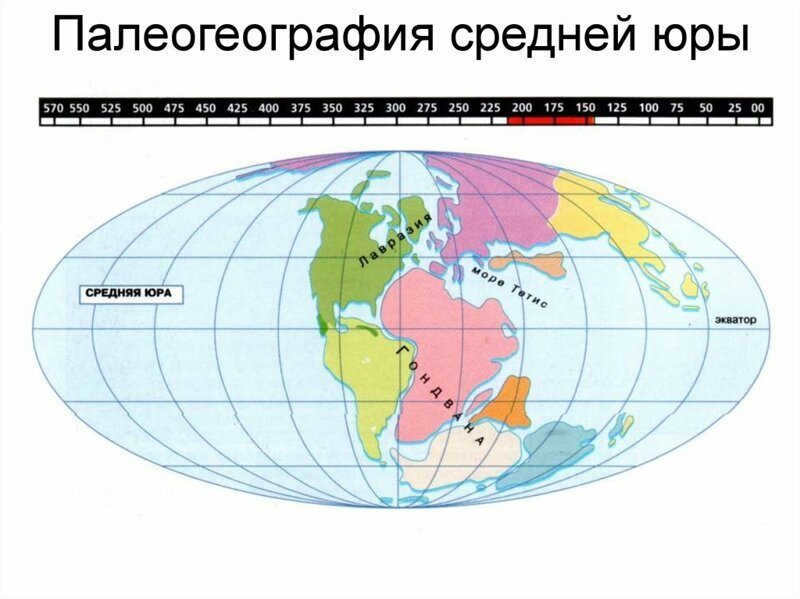
At the onset of the Jurassic period, the continents bore a resemblance to a unified mass, yet shallow seas were starting to emerge in between. The climatic conditions mirrored those of the Triassic period, characterized by tropical warmth.

Did you know that on March 21, 2010, the Eyjafjallajokull volcano came alive after being dormant for 200 years? This eruption was so incredibly intense that Iceland had to declare a state of emergency, and it even caused a complete halt in traffic on the nearby highways.
Traffic on the surrounding highways came to a halt and flights had to be canceled.
On March 31, a new fissure appeared, and for several days lava flowed abundantly from two vents simultaneously. This, however, was just the beginning. On April 13, the Icelandic volcano Eyjafjallajokull trembled once again, leading to the formation of a new 2 km crack, and a massive column of smoke rose to a height of eight kilometers. By April 15 and 16, this column had reached a height of 15 kilometers, and volcanic ash had spread into the stratosphere, dispersing over long distances.
Aside from the economic impact, the Eyjafjallajokull volcano in Iceland caused significant damage to the environment. During the initial three days of the eruption, approximately 140 million cubic meters of dust were released into the atmosphere. Eruptions release a large amount of suspended particles or aerosols into the air, including earth rocks and ash. The danger of such substances lies in their rapid dispersion over long distances, with devastating effects on the atmospheric composition as they absorb a portion of the sun’s radiation.
During a single eruption of the small volcano Eyjafjallajokull, an amount of CO2 was emitted that surpassed the total emissions that mankind could generate in the 21st century.
I hope not to cause any distress, but it is worth mentioning that the awakening of the Pinatubo volcano in the Philippines in 1991 resulted in the release of a greater volume of greenhouse gases into the atmosphere than the collective emissions produced by humanity throughout its entire existence.
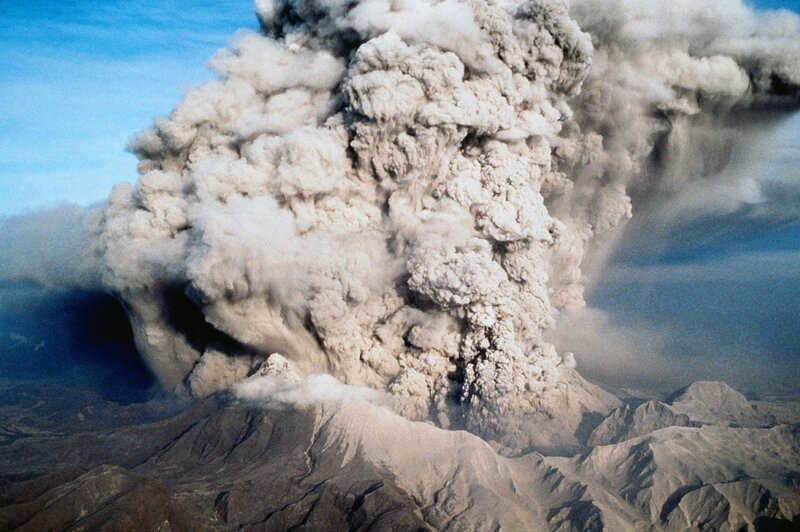

The global temperature of the planet experienced a gradual rise of 5 degrees. As a result of the altered air composition, precipitation levels multiplied, giving rise to heavy rainfall that washed minerals into the oceans. This influx of minerals led to a significant increase in the population of algae and aquatic bacteria.
The increased precipitation also contributed to the emergence of towering trees alongside ferns, resulting in a greater variety of vegetation types. The Jurassic period witnessed profound transformations in the Earth’s living organisms as well.
An intriguing piece of information: during that period, there existed archaeopteryxes, which were a fascinating blend of reptiles and birds.
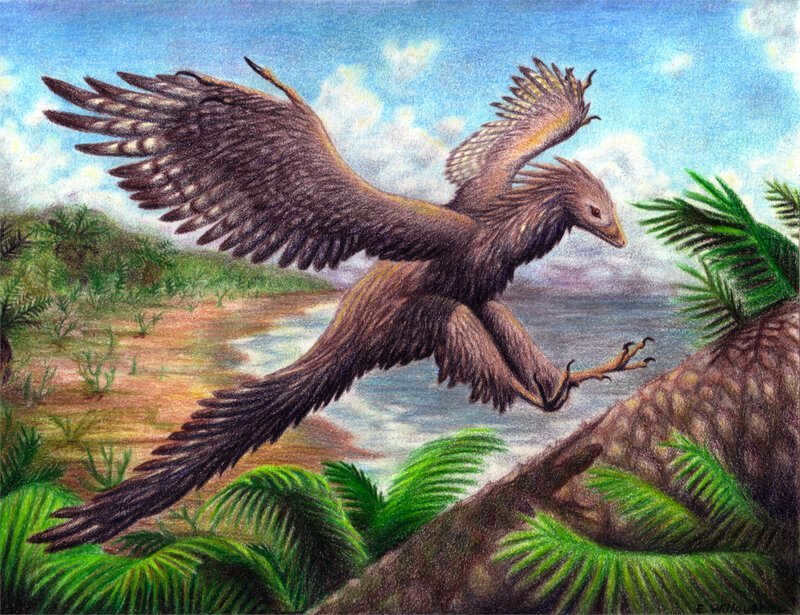

Although Archaeopteryxes had wings, they were not proficient flyers. Instead of a beak, they had a mouth resembling that of a lizard, complete with sharp teeth. Additionally, their bodies were covered in feathers. Archaeopteryxes are considered an unsuccessful attempt at transitioning from reptiles to birds. Unable to adapt successfully, these creatures became extinct after a span of 3 million years.
Temperatures experienced a rise around 174 to 166 million years ago, followed by a gradual cooling phase that even resulted in the formation of icy patches on land.
Around 155 Ma, the global temperature started to increase again, but by the end of the Jurassic period, a cooling trend had reemerged.
During the onset of the Cretaceous period, the continents had already drifted apart significantly. Africa, India, America, and Australia were moving in different directions, leading to the formation of modern oceans between them.
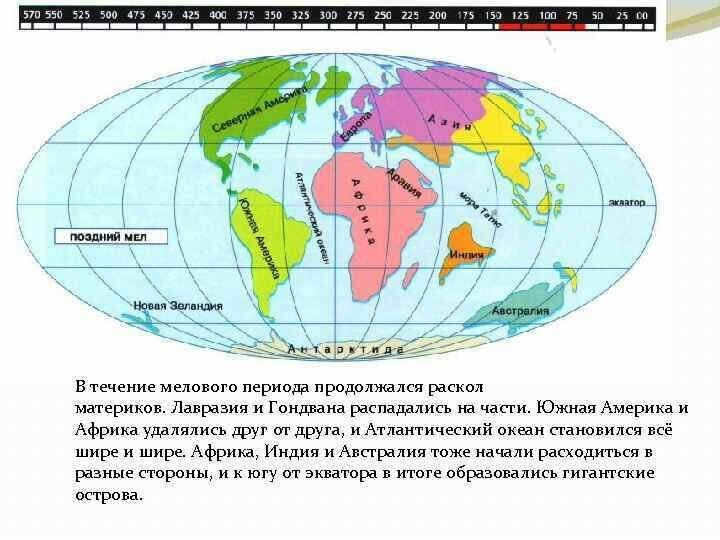

As time passed, the planet’s temperature gradually decreased. From the beginning of the Cretaceous period until around 114 million years ago, the average temperature dropped by 5 degrees. Approximately 20 million years later, volcanic activity in the Indian Ocean caused a significant decrease in oxygen levels in the ocean waters. This event led to the extinction of many marine species, particularly ichthyosaurs.
However, despite the challenges faced by the dinosaurs in the cold weather, their development was not hindered by the presence of plants. The Cretaceous period witnessed a rapid proliferation of various species of flowers and flowering plants across the planet. This, in turn, led to the emergence of a multitude of insects.
By the end of the Cretaceous period, the dominance of dinosaurs on Earth had diminished. The drop in temperature and the regular occurrence of harsh winters caused the extinction of some species, which were eventually replaced by other animals that were better adapted to survive in cold conditions. It is these new creatures that gradually took over the planet, eventually giving rise to the closest descendants of dinosaurs – birds.
The Cretaceous catastrophe, which occurred 66 million years ago, marked the end of an era. An abrupt extinction event caused the disappearance of a majority of animal and plant species.
Dinosaurs, once the dominant creatures on Earth, vanished from existence. However, some surviving animals managed to adapt and thrive in the changing climate, which gradually resembled the conditions we experience today.
Over the course of 185 million years, the climate underwent a significant transformation, transitioning from a hot environment to a colder one. This shift can be attributed to the fragmentation of the supercontinent Pangea into multiple smaller continents. While initially, temperatures rarely dropped below freezing, the last million years of dinosaur existence on Earth witnessed the arrival of cold winters every year.
Fascinating trivia: In 2018, an article was published in Nature that presented a groundbreaking method of calculating changes in forest areas using satellite images spanning several decades, a departure from the previous practice of using data from individual years.
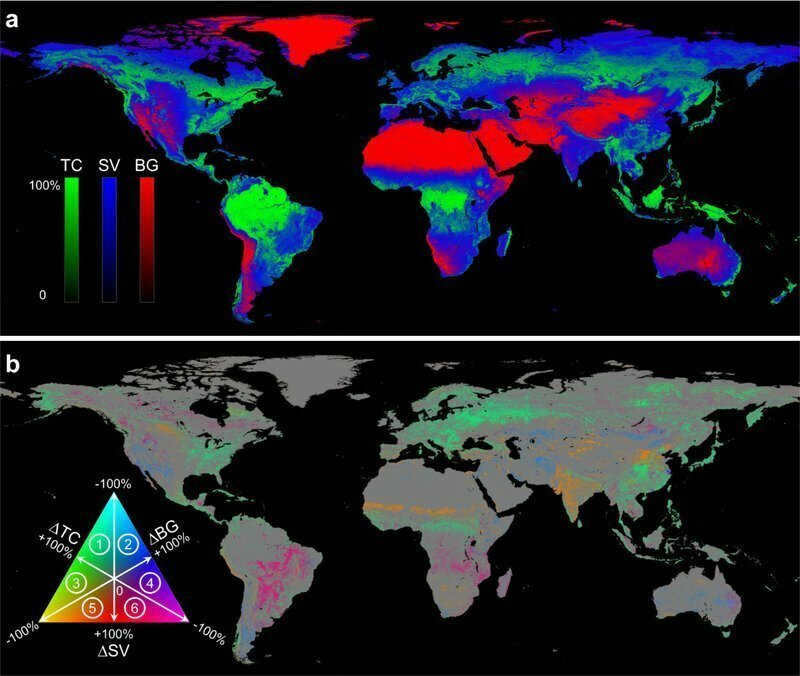

The findings revealed that between 1982 and 2016, there was an increase of 2.24 million square kilometers in forest area, equivalent to a yearly growth of 64 thousand square kilometers. This growth was observed in various zones, including the subarctic (such as the taiga in Russia), subtropical, and temperate regions (including Russia).
As it is widely acknowledged, forests play a crucial role in absorbing sunlight and reducing the amount of sunlight reflected from the Earth’s surface. Additionally, young forests actively contribute to the production of CO2. Forests, therefore, serve as highly influential terraformers, working to create a more favorable and warmer climate on our planet, reminiscent of the era of peak biodiversity and biomass.
Undoubtedly, the Wilson cycle is not the sole mechanism responsible for the Earth’s climate variations. One of the most significant theories suggests that the primary driver of global climate warming is the fluctuations in solar activity.
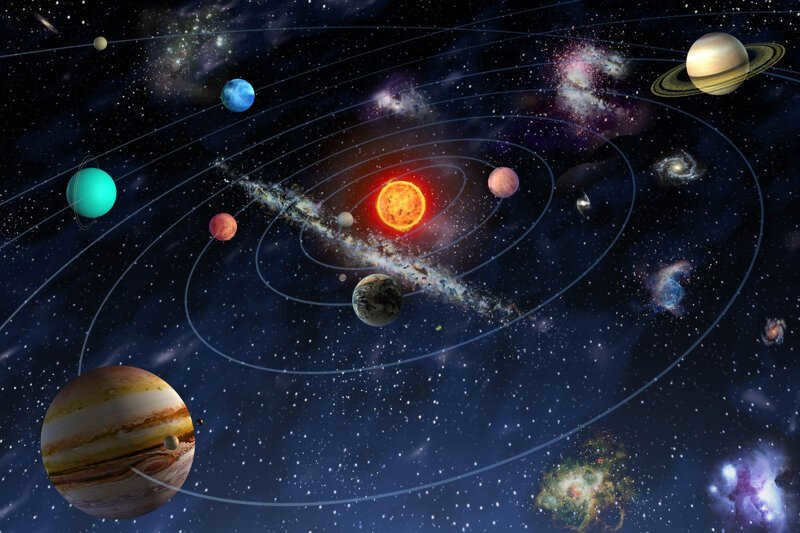

Without a doubt, the behavior of the sun has a significant impact on everything that occurs on our planet. It is not surprising that even minor variations in solar activity will inevitably influence the weather and climate of the entire Earth. Experts identify 11-year, 22-year, and 80-90-year cycles of solar activity, known as the Glaisberg cycles.
The Earth has already undergone both global warming and significant cooling throughout the history of humanity.


The significance of weather data for ancient literate civilizations is evident in various historical artifacts. Cuneiform tablets from Babylon, papyri from Ancient Egypt and Phoenicia, parchment scrolls from Ancient Greece and Rome, silk letters from Chinese emperors, and stone books from the Inca, Aztec, and Maya civilizations all attest to this fact.
According to Scandinavian manuscripts, it is known that during the early years of the second millennium (10th and 11th centuries), a large part of Greenland was not covered in ice. This is why Norwegian sailors named it Greenland, as it translated to “green land”. However, the climate eventually became significantly colder, leading to the Little Ice Age in the 17th and 18th centuries.
Even artistic works from that time period depict the harshness of the winters. One such example is the painting “Skaters” (1641) by Dutch artist Jan van Goyen, which shows people skating on the frozen canals of Amsterdam. It is hard to believe now that the canals in the Netherlands ever froze over. Historical records from Britain also reveal that in the early 18th century, even the Thames River in London froze, allowing people to walk across it on ice.
In the present era, humanity annually emits approximately 14 billion tons of carbon (not carbon dioxide) through the combustion of coal, oil, and natural gas.
Simultaneously, our planet’s atmosphere holds a staggering 700 billion tons of carbon. This indicates that human activities, specifically fuel combustion, account for just 2% of the total mass of carbon emissions.
Only 2%.
Moreover, the annual carbon cycle contains a staggering amount of 150 billion tons of carbon.
Interestingly, this has a tremendously beneficial impact on photosynthesis and the expansion of forest coverage.
Fascinating trivia: as of now, not a SINGLE report on climate change exists that presents compelling data and/or calculations. The type of “we are releasing this much CO2 and generating this much heat into the atmosphere.”


This fact is quite remarkable.
None at all.
At the most, there is some data available regarding the change in air temperature over the years, the melting of glaciers, and other indicators.
However, there is a complete absence of evidence and/or calculations demonstrating even the slightest connection to human economic activity.
How significant is the impact of anthropogenic activity on climate change? There is no data to support any claims.
Does human activity have any effect on climate change whatsoever? There is no evidence to suggest so.
The climate has undergone changes throughout history. Evidence from historians, anthropologists, archaeologists, and other scientists confirms that the Earth’s climate is in a constant state of fluctuation. There have been periods of ice ages (both long and short) followed by periods of warming.
In fact, there were gardens flourishing in the Sahara during the 10th and 11th centuries, and Greenland was once truly green (and it may very well become green once again). Let Greenland turn green again!
The main issue lies in the sheer volume of waste. Both the United States and the European Union are struggling to manage their waste, although our own garbage problems are not as severe. Unfortunately, recycling efforts are almost non-existent.
Until recently, they would export their waste to China (which is already absurd, considering the long-distance transportation involved!). However, China has recently refused to accept any more waste. As a result, they have started sending it to Indonesia and other countries, including those in Africa. In a few years, these places will be completely overwhelmed with waste (some are already suffering from the effects), and then what? The oceans are already filled with massive “sargassum seas” of plastic garbage, which neither sinks nor decomposes.
And all the statistics and data regarding garbage are well-documented – the amount produced, its composition, accumulation locations, and more. Unlike climate change, this is a problem that can actually be resolved.
We must focus on the development of recycling, implement penalties and taxes for non-recyclable waste, and promote eco-friendly packaging (such as glass and paper instead of plastic and polyethylene, and bring back reusable bags!).
Did you know: Recep Tayyip Erdogan, the leader of Turkey, has launched a major campaign against polyethylene bags and is advocating for the revival of hemp thread avoski.


Erdogan has highlighted that the currently prevalent bags will take several centuries to decompose in the soil.
The President has reminisced about his parents owning similar bags. These bags were not discarded after purchase, but rather washed when necessary and reused.
Erdogan has emphasized that in his small homeland, hemp was cultivated and employed to produce thread for such bags. He has urged the Turkish Ministry of Agriculture to address this matter.
Spinosaurus, the river beast, prehistoric creatures’ population decrease started prior to the arrival of the meteorite, and other intriguing details about ancient fauna
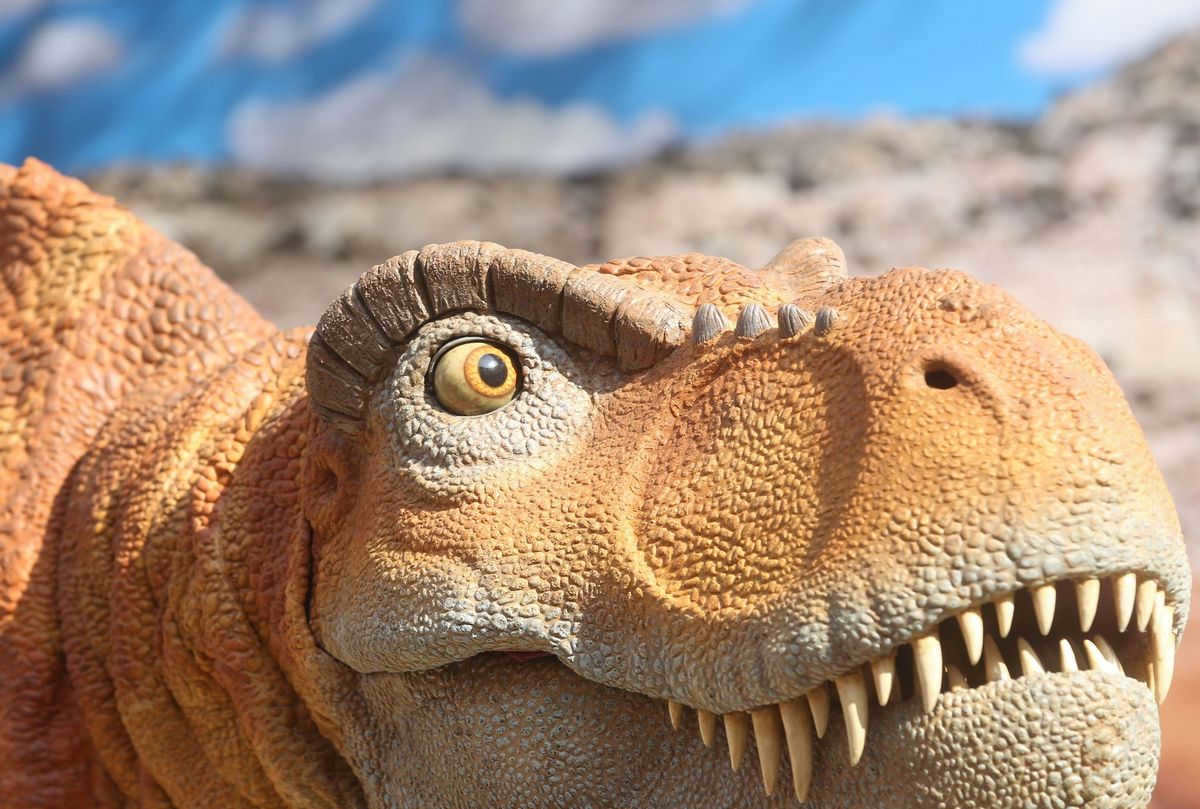
Dinosaurs became extinct over 65 million years ago, however, researchers refuse to let them remain undisturbed in their massive tombs. They are actively unearthing fossils and conducting investigations, revolutionizing our comprehension of the biology and civilization of these remarkable beings. Presented below are ten recently uncovered truths and hypotheses concerning the colossal creatures that once caused tremors on our planet.
1. Billions of Tyrannosaurs once roamed the Earth
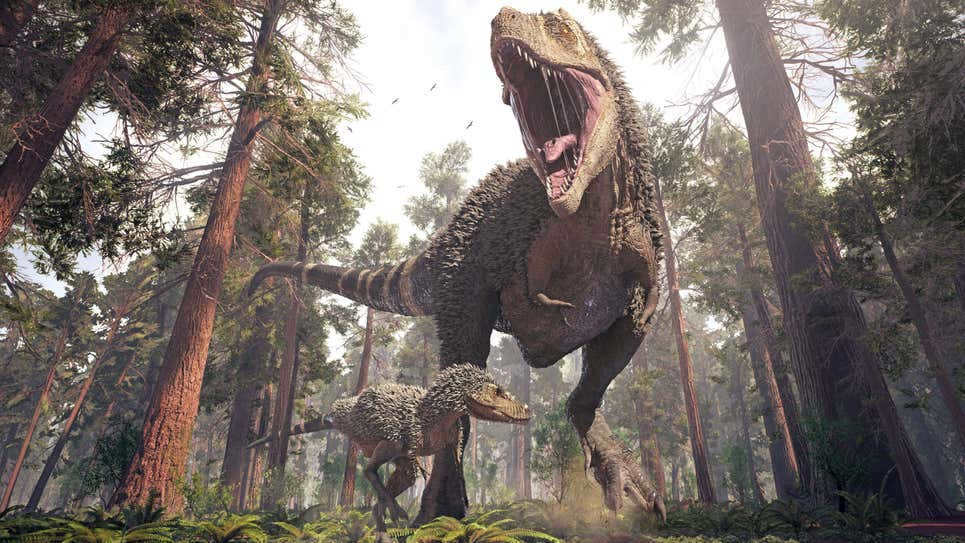
Considering the scarcity of fossil evidence, it is easy to envision Tyrannosaurus rex as an uncommon dinosaur species. However, scientists approximate that the total number of T-Rex individuals reached around two and a half billion.
Regrettably, this number was dispersed throughout their entire lifespan, so there were never billions of these creatures coexisting on Earth simultaneously. At any given moment during their 2.5 million-year reign, there were approximately 20,000 individuals. Nevertheless, that is still a substantial quantity of ti-rex.
2. It is highly probable that Spinosaurus was an aquatic creature
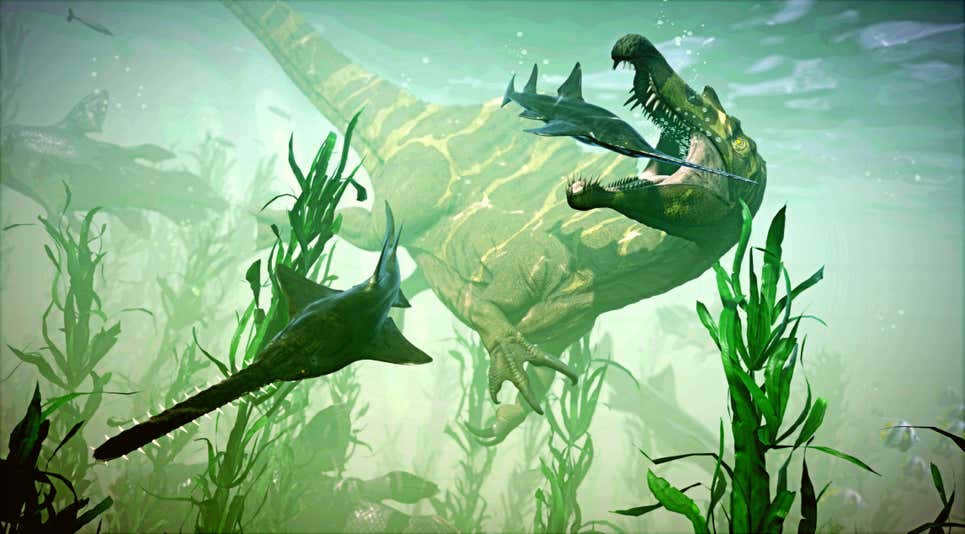

For a long time, scientists believed that Spinosaurus hunted by standing on the edge of a river or lake and patiently waiting for fish to swim past. However, recently discovered fossils of the tail, large bones, and other fragments of Spinosaurus suggest that this species was actually an adept swimmer. It is highly likely that it would dive into the water to catch its prey and swim with great skill.
“In essence, it was a massive aquatic creature,” said Nizar Ibrahim, a paleontologist at Detroit’s Mercy University. – “I have tremendous admiration for water monsters.”
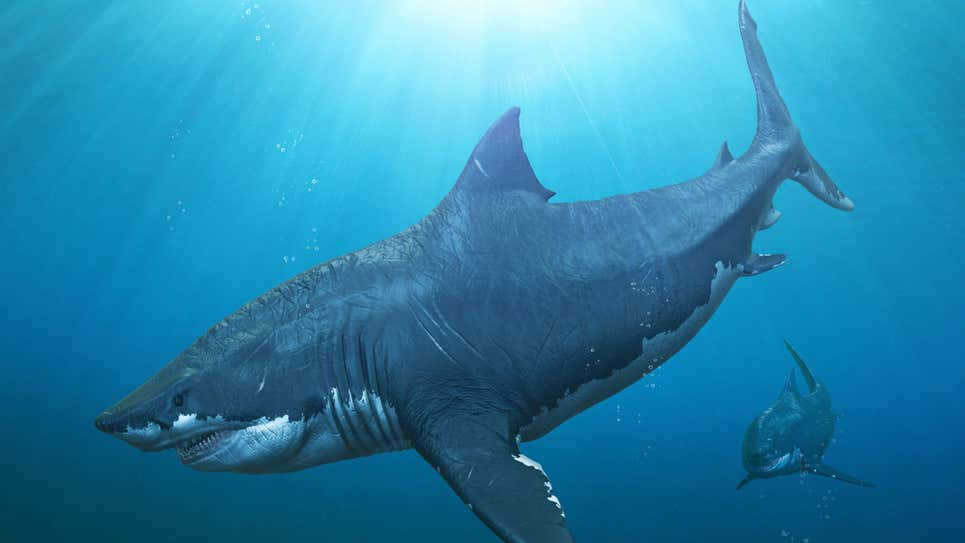
Despite the asteroid impact that caused the extinction of all land-dwelling creatures, sharks remained indifferent. They paid no attention to the tragedy unfolding on the surface and continued their relentless swimming and killing. Scientists have discovered that the diversity of shark species remained relatively unaffected before and after the catastrophic event. This implies that even a global-scale disaster had minimal impact on sharks, those self-assured and flawless predators of the sea.
4. The “Grim Reaper” was a real entity
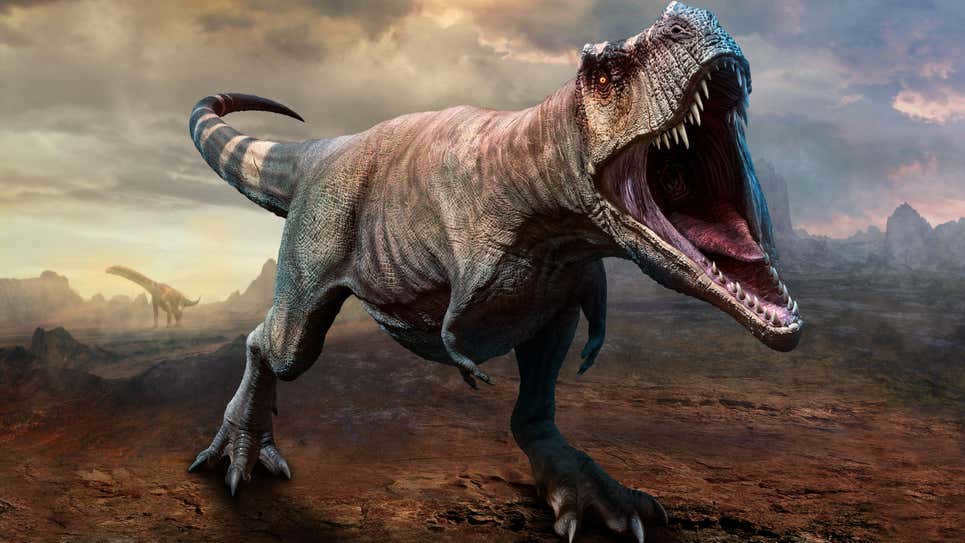
The ti-rex, a well-known dinosaur, has been recently discovered by paleontologists to belong to a fascinating subgroup of tyrannosaurs. These tyrannosaurs are so remarkable that they have been named Thanatotheristes – a Greek word that translates to “Death Reaper.”
“We decided to use this name to accurately describe what this ti-rex was – the sole known apex predator in Canada during that time. It truly was a reaper of death,” explained Darla Zelenicki, an enthusiastic professor specializing in paleobiology, in an interview with the BBC.
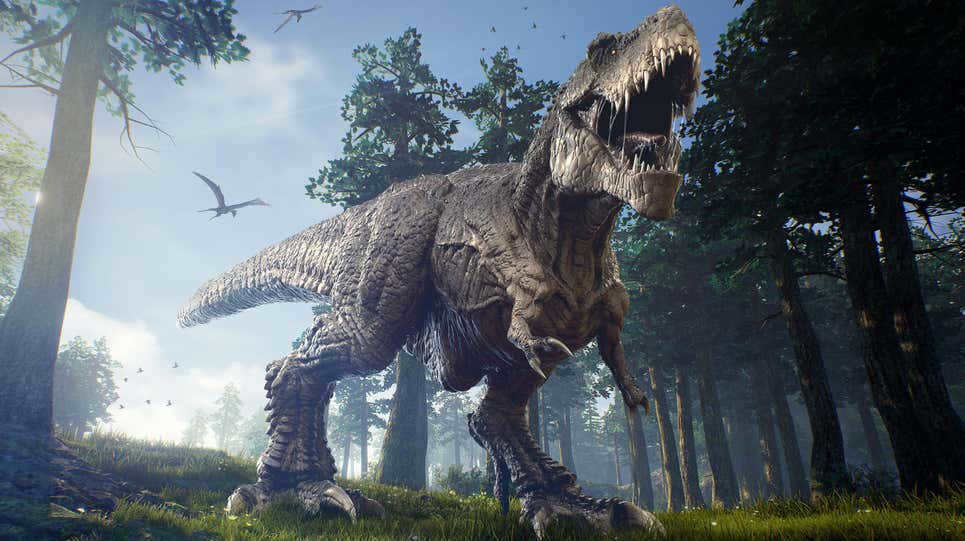
Herschel Hoffmeyer (Shutterstock)
It appears that paleontologists are engaged in a competition to determine who can devise the most formidable designations for recently discovered dinosaur species. Researchers from Argentina, who specialize in the study of ancient creatures, have bestowed upon the newly unearthed predators belonging to the Abelisauridae family the name “Llukalkan aliocranianus”, which translates to “Llukalkan aliocranianus” or “The One Who Instills Fear”.
No investigations have been conducted as of yet to determine the victor in a hypothetical clash between the “Death Reaper” and “The One Who Instills Fear”, but it seems logical to place a wager on the T-Rex. After all, it was substantially larger, measuring 12 meters in length compared to the 5 meters of “The One Who Instills Fear”. (If you have seen “Jurassic Park” or at least one of its sequels, you will be familiar with what we are referring to.)
6. Another option is called “Panty Dragon.”
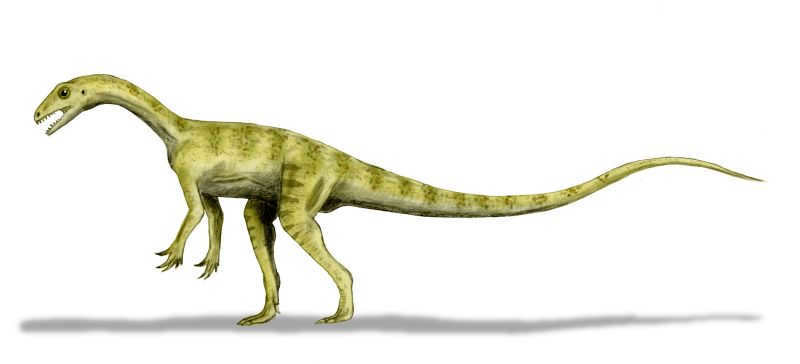
Not all dinosaurs have intimidating names. Consider Pantydraco as an example. Fossils of these unique creatures were unearthed in Wales in 2003. The “minnows” measured just three meters in length.
“Phew, look at this useless dinosaur species we discovered! We bet they must have been the dumbest, – “the paleontologists couldn’t be bothered. – Let’s give them a silly name that will make everyone chuckle!”.
Panty is derived from the Welsh word Pant-y-ffynnon, which translates to a hollow or a deepening of a spring or well. In the context of this statement, it pertains to the quarry located in Bonvilston, South Wales, where the remains of this relic were discovered. However, it is undeniably an insignificant dinosaur. I apologize for informing you of its existence, but thankfully, it is no longer present.
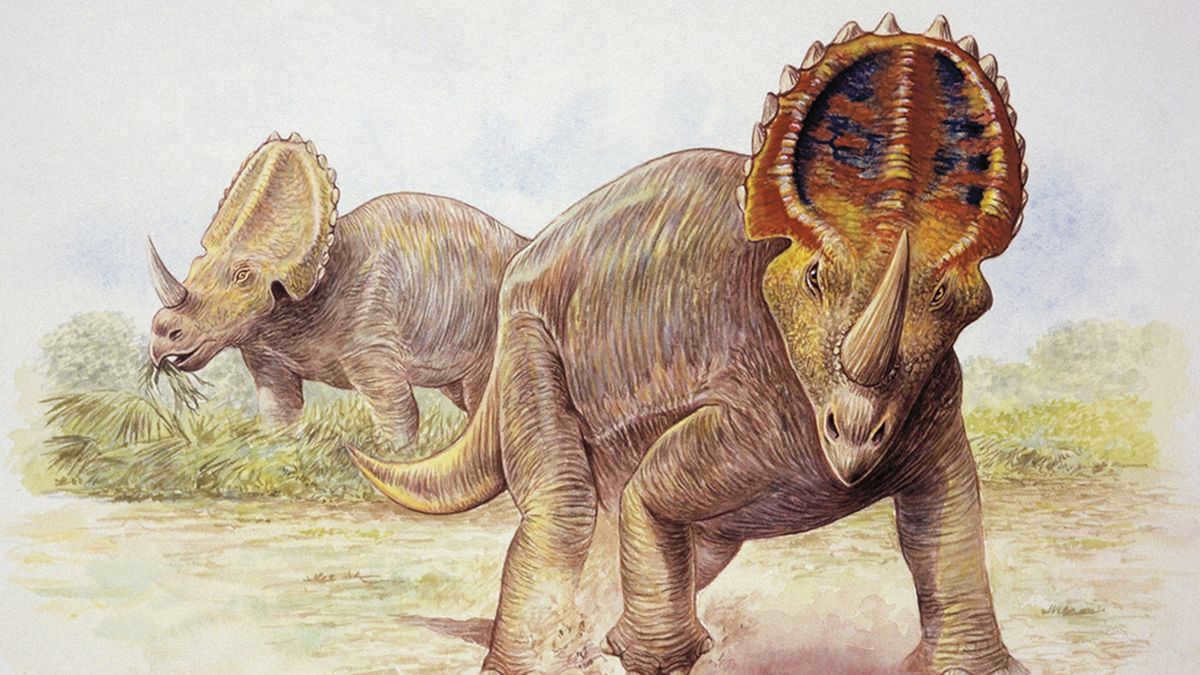
Dinosaurs didn’t just spend their lives roaring, hunting, and feasting on flesh. A group of scientists who specialize in the study of ancient life and diseases discovered evidence of osteosarcoma, a type of malignant bone cancer, in a fossilized dinosaur bone that is approximately 75 million years old, found in Canada. The researchers determined that the cancer had progressed to a point where it had likely spread throughout the dinosaur’s entire body.
While this cancer was undoubtedly unfortunate for the individual dinosaur and its family, it provides valuable information for us humans. According to Katherine Forster, a paleontologist from George Washington University, “If humans and dinosaurs both experienced the same types of bone cancer, then human osteosarcoma has deep roots in evolutionary history. It likely existed before mammals and reptiles diverged 300 million years ago.”
8. Dinosaurs inhabited every continent
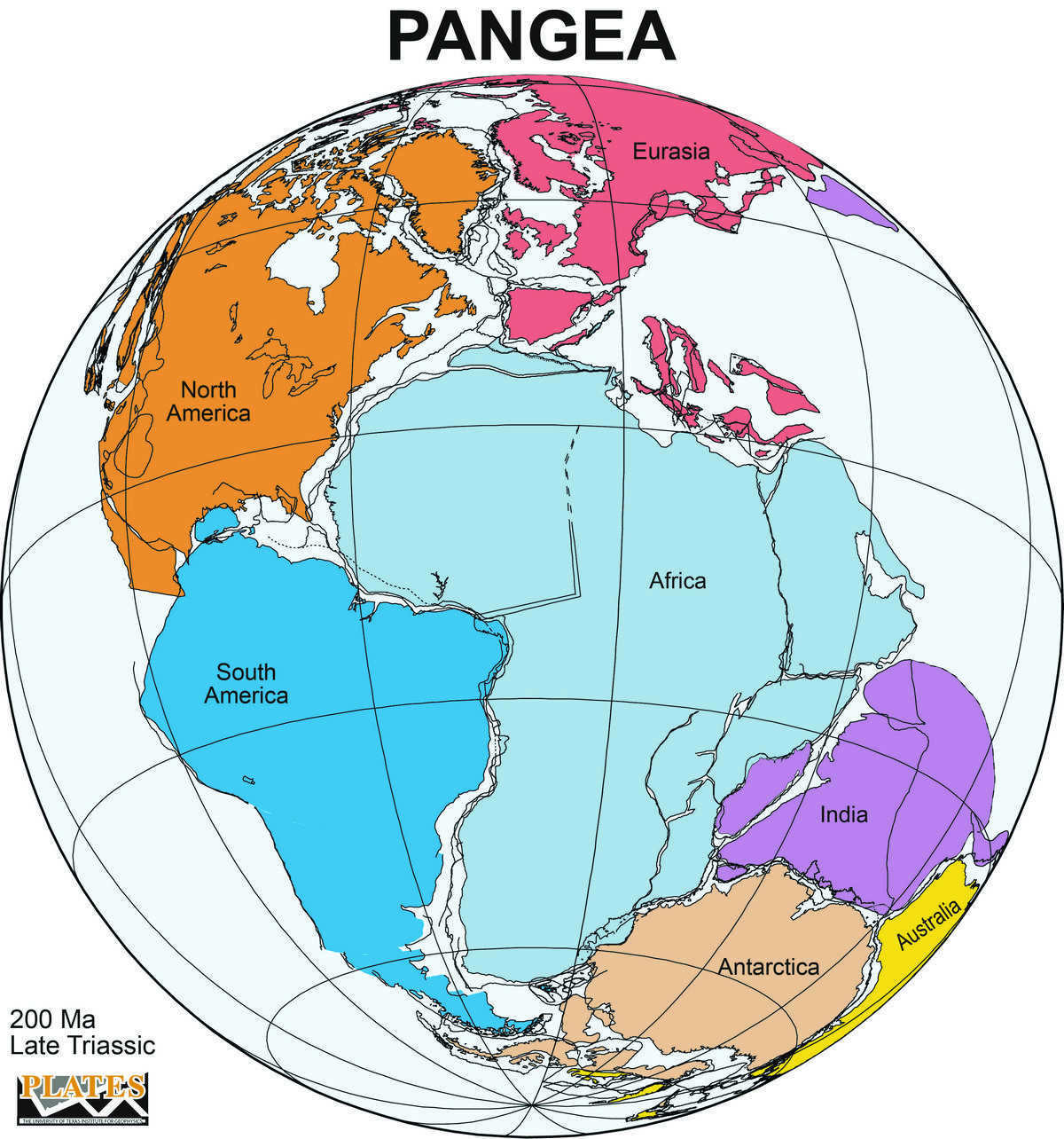
Dinosaur remains have been discovered on every single landmass on the planet, including Antarctica!
However, it is important to bear in mind that the landmasses of the planet during the era of the dinosaurs were vastly different from what we see today. From 335 to 175 million years ago, all of the landmasses were joined together in one gigantic landmass known as Pangaea.
Furthermore, the climate was significantly warmer, allowing them to thrive comfortably on all of the landmasses.
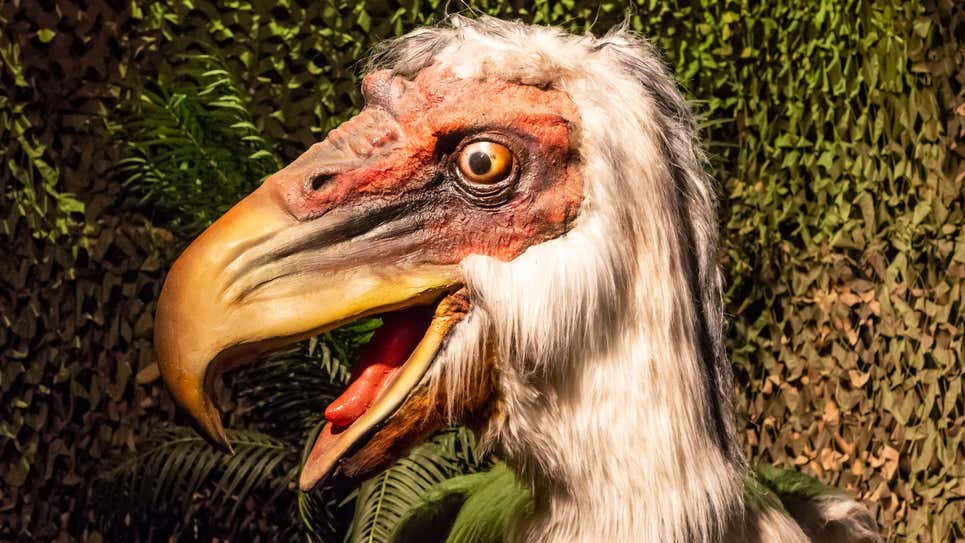
Andrey Kamyshev (Shutterstock)
Once upon a time, there existed a period when dinosaurs and the ancestors of chickens and ducks coexisted in the same territory, competing for survival and potentially engaging in inter-clan conflicts.
Recently, scientists made an exciting discovery: the perfectly preserved skull of a prehistoric bird that resembled a chicken. This remarkable find provides evidence of the remarkably long lineage of modern laying hens, earning the bird the nickname “miracle chicken.”
Despite being smaller and weaker compared to most dinosaur species, this prehistoric bird managed to survive the extinction event that led to the demise of the dinosaurs. This event marked the end of an ancient rivalry, with birds demonstrating their intelligence and resilience in outlasting the dinosaurs.
10. It is possible that the extinction of the dinosaurs occurred prior to the impact of the asteroid.
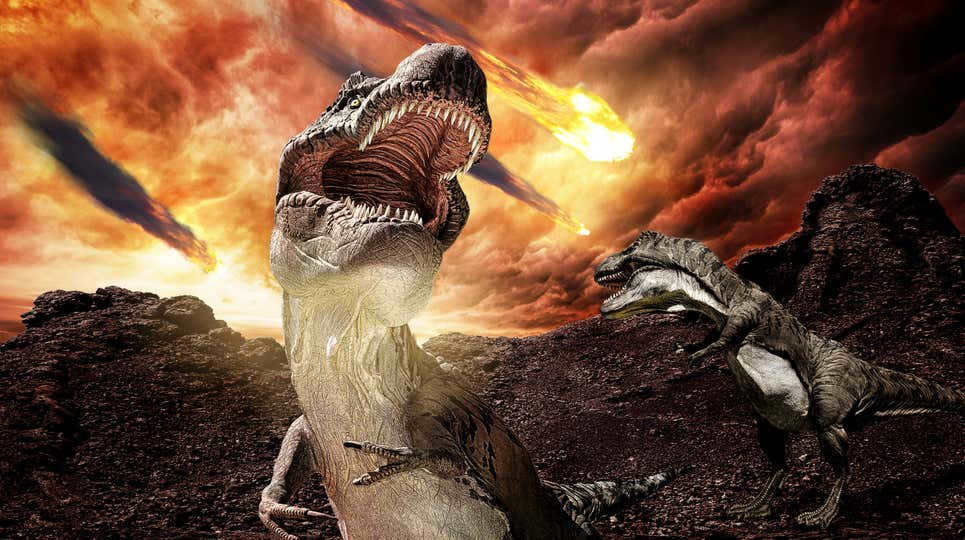
When a massive asteroid collided with Earth approximately 66 million years ago, leading to the extinction of all dinosaurs, it is possible that this event only accelerated a process that had already been in motion. Researchers from the University of Bristol propose that even 10 million years prior to the ultimate demise, the dinosaur population had been steadily declining. This decline is believed to have been caused by a combination of climate cooling and ecosystem instability, which was further exacerbated by sporadic herbivore extinctions.
“There is no need for idle speculation!” countered their peers at the University of Bath. Their own investigations have demonstrated that the dinosaurs were not experiencing a decline prior to the asteroid impact, and if circumstances had been more favorable, they could potentially still exist in the present day.
Credit: J. Omar Ornelas/The Desert Sun
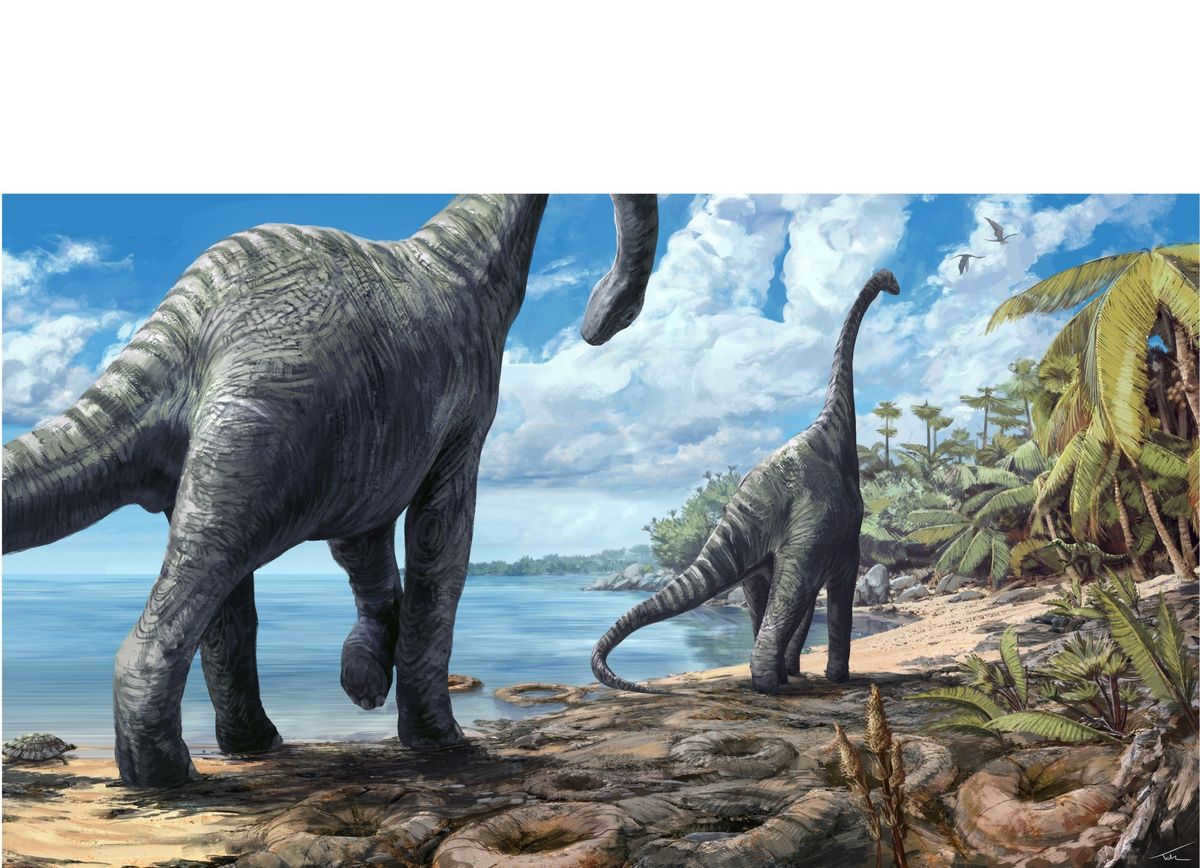
Dinosaur Trivia: The Most Fascinating Facts
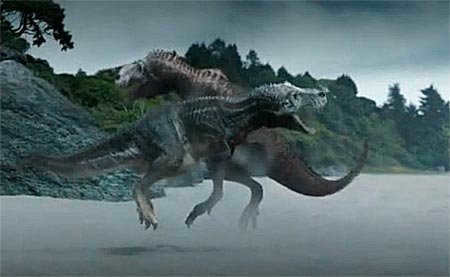

Scientists have identified different epochs in the history of the Earth, known as “eras.” Each era is further divided into distinct periods, each lasting for millions of years. It is worth noting that the specific start and end dates of these eras and periods may vary slightly depending on the source.
The Paleozoic Era, also known as the Paleozoic Era, began approximately 570 million years ago and lasted for a remarkable 340 million years. During this time, significant changes occurred in the world of living organisms.
The Earth saw the emergence of both aquatic and terrestrial life forms. While mammals and birds had not yet appeared, vertebrate animals began to evolve. This era witnessed an extraordinary diversification of life on our planet.
However, the composition of the organisms from that time has remained relatively unchanged. These molecules have undergone very minimal changes up until today. As a result, the molecules that make up the human body are very similar to those found in the oldest crustaceans, for instance.
The Paleozoic era is categorized into six periods: Cambrian, Ordovician, Silurian, Devonian, Carboniferous, and Permian.
During the early stages of the Paleozoic Era, there was a remarkable “explosion” of life, leading to the formation of numerous invertebrate species. However, this primarily occurred in water, particularly in warm seas, while the land remained desolate.
A little over 400 million years ago, plants started colonizing the land. In the beginning, they were unattractive sprouts. However, after countless years, the Earth became home to lush forests.
Following the plants, invertebrate animals ventured onto land. The plentiful food supply on land attracted predatory fish. These fish were the only ones capable of leaving the water thanks to their unique limbs, and they could breathe air with their primitive lungs. Many millions of years passed, and these fish, gradually evolving, transformed into new species. These new species belonged to a new class called amphibians.
The Carboniferous period of the Paleozoic Era, also known as the Carboniferous, began 345 million years ago and ended 280 million years ago. During this time, forests thrived in the hot and humid climate. Millions of years later, these trees transformed into coal.
Amphibians ruled the swamps and the surrounding forests, ranging from tiny creatures to massive five-meter-tall stegocephals with tails that were skilled predators.
The first reptiles made their appearance towards the end of the Carboniferous period.
The Permian period, also known as the Permian (280-230 million years ago), witnessed a rapid emergence of new reptile species.
The Mesozoic Era, which began 230 million years ago and lasted for 165 million years, marked the appearance of higher (flowering) plants. It was also during this era that giant lizards such as dinosaurs and ichthyosaurs emerged, dominating the planet before their mysterious extinction. Additionally, mammals and birds evolved during this time.
Epochs in Earth’s history: the Triassic Period
The Triassic period of the Mesozoic or Triassic (230-190 million years ago) was characterized by the prevalence of reptiles on land, in water, and in the atmosphere. Among the most renowned of these reptiles are the dinosaurs.
Dinosaurs moved on either four limbs or two. It is highly probable that dinosaurs of certain species were warm-blooded. Based on dinosaur footprints and the remnants of their eggs, it can be inferred that these creatures were nurturing parents.
Dinosaurs laid their eggs in mounds of plant matter. As this material decomposed, it emitted heat and the clutch of eggs was warmed. The mother remained close by to protect the nest (similar to crocodiles, which are relatives of dinosaurs).
Recently, scientists made a remarkable discovery: they found the remains of a female dinosaur positioned on top of a cluster of fossilized eggs. It is believed that the mother dinosaur was providing warmth to the eggs before she perished, but unfortunately, she did not get to witness their hatching. It is also possible that eggs of different species were incubated together.
The exact color of dinosaurs’ skin remains a mystery. It is speculated that they might have had vibrant and diverse colors, similar to many present-day reptiles like lizards and snakes. Artists often depict dinosaurs with such bright and multicolored hues.
The term “dinosaurs” originates from the Greek words for “terrible” and “lizard.” However, not all dinosaurs were actually “terrible” in nature.
During the Triassic period, dinosaurs were generally small, agile, and swift creatures. They would sprint on their hind legs, utilizing their long tails to maintain balance.
The Jurassic period, which occurred 190-135 million years ago during the Mesozoic era, is known for the emergence of colossal dinosaurs.
Stages in the history of Earth: gigantic creatures
Within the Jurassic period, the most enormous creatures on land were the “sauropods.” These creatures had hefty bodies supported by thick legs, and their toes were equipped with massive blunt claws. They possessed long necks and even longer tails. Without needing to move their bodies, they could simply extend their necks to pluck and consume vast amounts of vegetation.
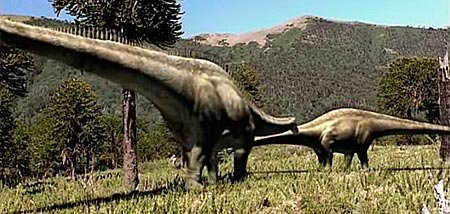
The sauropods had relatively small brains compared to their bodies, about the size of a fist or even smaller. Nevertheless, it is believed that these dinosaurs exhibited complex behavior. It is speculated that they lived in herds, as indicated by fossilized footprints.
It is possible that they worked together to defend themselves against predators that existed during the Jurassic period. However, the exact methods they used to fight back remain unknown.
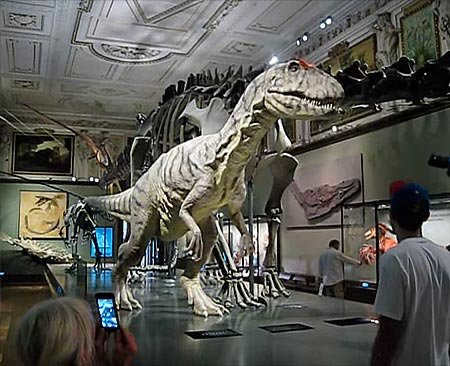
Allosaurus was a formidable predator during the Jurassic period. It was a swift creature weighing approximately one ton, equipped with large claws and teeth resembling curved daggers. Allosaurs would often hunt in packs, targeting larger herbivorous dinosaurs.
Carnivorous dinosaurs lacked the ability to chew their food due to their serrated teeth. Instead, they would swallow their prey in whole. Using their teeth, these predators would tear through the tough skin of their victims and crush the bones.
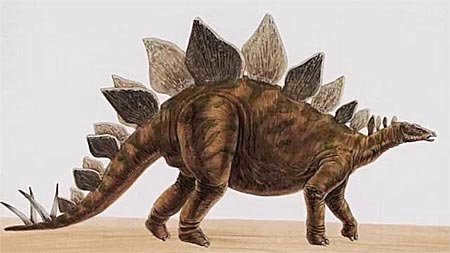
Stegosaurus. These dinosaurs were massive, measuring up to 9 meters in length. They had a huge appetite, consuming tons of green vegetation. To defend themselves against predators, they had sharp, long bone spikes on their tails. The bony plates on their backs likely served as shields, protecting them from teeth and claws of enemies.
Avian Reptiles
Pterosaurs, known as winged reptiles, first appeared in the late Triassic period and continued to fly until the end of the Cretaceous period. Their wings were composed of a flexible membrane that extended from their body and limbs to one of their remarkably elongated fingers on the front limbs. The remaining fingers were typical in structure, allowing the reptiles to grip onto branches and rocks during periods of rest.
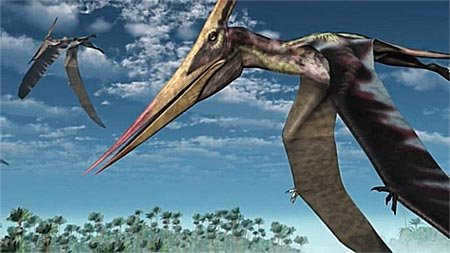
Pterosaurs – creatures with slender, hollow (resembling those of birds) bones. The initial pterosaurs possessed a tail and teeth. After millions of years, these creatures shed this extra weight. Pterosaurs were clearly warm-blooded. Their bodies were covered in a type of hair known as “fur”. These reptiles had well-developed brains.
Smaller pterosaurs (with a wingspan of around 8 cm) preyed on insects. The larger ones (with wingspans of 1 meter, 2 meters, and even 6 meters) swooped down to snatch fish, cephalopods, and other aquatic prey. Pterosaurs likely provided food for their offspring.
Reptiles that have not gone extinct. Snakes, turtles, lizards, and crocodiles emerged during the Mesozoic Era. They did not differ significantly from their present-day counterparts.
Marine Reptiles
Ichthyosaurs were the most well-suited creatures for living in the ocean. They originated during the Triassic era and bear a striking resemblance to dolphins. This similarity can be attributed to their shared aquatic lifestyle. However, unlike dolphins, ichthyosaurs have a vertical tail fin instead of a horizontal one.
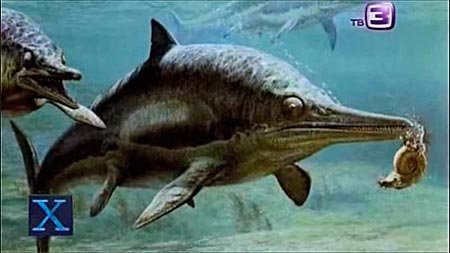
The laying of eggs in water was not possible for reptiles, which led to the unique situation where ichthyosaurs gave birth to fully formed offspring.
A diverse range of long-necked plesiosaurs, mosasaurs resembling crocodiles, and other aquatic lizards were engaged in the hunting of fish and cephalopod mollusks. Occasionally, they would engage in fierce battles with each other.
It is important to note that not all fossilized aquatic reptiles are classified as dinosaurs!
Predatory lizards possessed relatively large and well-developed brains, resulting in complex behavior. Some individuals even displayed the ability to hunt together, effectively coordinating their actions.
Reptiles were the dominant species on both land and sea until the end of the Cretaceous period. It was during this time that the Tyrannosaurus Rex, the largest land predator in Earth’s history, first appeared.
Around 65 million years ago, dinosaurs, pterosaurs, and marine lizards all disappeared almost simultaneously. They became extinct, leaving no descendants. Cephalopod mollusks such as ammonites and belemnites also perished.
What caused this ecological catastrophe? There are numerous theories, all of which are subject to debate and controversy.
One of them can be illustrated by a massive meteorite, possibly even an asteroid, colliding with the Earth. The resulting explosion created a massive cloud of dust that blocked out sunlight for a significant period of time. These extreme living conditions proved too much for the dinosaurs to handle, ultimately leading to their extinction. It is highly plausible that this event occurred. However, what remains puzzling is why the dinosaurs’ closest relatives, the crocodiles, managed to survive this ecological catastrophe.
The exact causes of the mass extinction that occurred at the end of the Cretaceous period continue to elude scientific understanding.
During the Jurassic period, birds began to emerge on Earth. The first discovered fossilized bird was given the name “Archaeopteryx.”
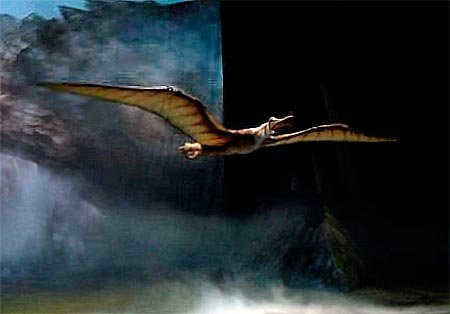
The ancestors of dinosaurs, crocodiles, and birds share a close genetic relationship. The external similarities between birds and dinosaurs are undeniable, as are other characteristics they share, such as scales on the legs of birds. However, it is incorrect to claim that birds are direct descendants of dinosaurs. Rather, they are closely related species.
Archaeopteryx possessed a covering of feathers, indicating its warm-blooded nature. While capable of flight, its abilities in this regard were limited. Notably, the tail of Archaeopteryx’s skeleton exhibits a lizard-like structure, a feature absent in modern birds. The creature’s mouth is adorned with teeth rather than a beak, and each wing boasts three fingers, allowing for grasping of tree branches. The precise manner in which the diminutive Archaeopteryx, roughly the size of a magpie, utilized its wings remains uncertain. Did it employ a flapping motion to traverse between branches, or did it primarily navigate on the ground, utilizing a combination of jumping and wing flapping to seize airborne insects with its teeth and evade predators?
Archaeopteryx retains several reptilian characteristics, gradually diminishing over time.
During the Cretaceous period, a wide range of birds screeched (they were not yet able to sing) in the treetops. Birds swiftly and agilely flew, capturing their prey from the mouths of less agile pterosaurs.
Mammals
Mammals first emerged towards the end of the Triassic period – after dinosaurs but before birds.
The ancestors of mammals were reptiles resembling animals. They differed in many ways from other reptiles, such as the ancestors of dinosaurs. These animal-like reptiles were likely warm-blooded creatures (at least many of them were). Instead of scales, their skin was probably covered in hair. They also had various glands on their skin that secreted sweat and other fluids, among other distinctive features.
It is conceivable that certain species of these reptiles with animal-like characteristics may have possessed glands that secreted a substance akin to milk. This fluid could have been lapped up and consumed by newly hatched offspring (similar to how platypus offspring do today).
Subsequently, the offspring would have been born and developed in a manner similar to that observed in marsupials today. Eventually, a specialized organ evolved to provide nourishment to the offspring within the mother’s body, known as the placenta.
The initial mammals were diminutive creatures (resembling a shrew or hedgehog in size). They clandestinely coexisted with dinosaurs in the perilous world for countless millions of years. It is likely that they concealed themselves in the underbrush, exclusively hunting at night for insects, mollusks, and other small edible organisms. They may have also consumed reptile eggs.
What the Earth Looked Like in the Time of the Dinosaurs – The Earth Was Purple Ancient Plants in Antarctica Triassic Period (251 – 201 million years ago) Jurassic Period And here's where Moscow was when dinosaurs first appeared on the planet
During the era when dinosaurs roamed the Earth, the planet had a distinct appearance. In the Triassic and Jurassic periods, the Earth was adorned with a vibrant shade of purple, instead of the green hues we see today. This intriguing theory suggests that if you were to observe our planet from space billions of years ago, it would have been as purple as it is green in the present day.
Epochs of dinosaurs
Geologists categorize the Triassic, Jurassic, and Cretaceous epochs to differentiate the various types of geological strata (chalk, limestone, etc.) that were created millions of years in the past. Due to the fact that dinosaur remains are typically discovered within rock formations, paleontologists associate the era of dinosaurs with the geological epoch in which the fossils were unearthed.
To grasp the significance of these eras in the geological timeline, it is crucial to bear in mind that the Triassic, Jurassic, and Cretaceous periods do not encompass the entirety of our planet’s existence. The oldest period is the Precambrian era, commencing with the Earth’s formation 542 million years ago. The emergence of multicellular life denotes the start of the Paleozoic era (542-250 million years ago), which consists of briefer geological periods: the Cambrian, Ordovician, Silurian, Devonian, Carboniferous, and Permian. Only after that does the Mesozoic era (250-65 million years ago) commence, encompassing the Triassic, Jurassic, and Cretaceous periods.
Epoch of the Dinosaurs (Mesozoic)
Below are descriptions of each epoch (Triassic, Jurassic, and Cretaceous) of the Mesozoic Era. Throughout this extended period of time, dinosaurs, marine reptiles, pterosaurs, mammals and birds, as well as an array of plant species, underwent evolution. It wasn’t until the Cretaceous epoch, over 100 million years after the commencement of the “Age of Dinosaurs,” that the largest dinosaurs emerged.
Triassic Epoch (237-201 million years ago):
- Archosaurs (reptiles that dominated); therapsids (reptiles resembling beasts),
- plesiosaurs, ichthyosaurs,
- cicadas, ferns, ginkgo trees and nudibranchs.
Jurassic Epoch (237-201 million years ago):
- Dinosaurs (sauropods, therapods); early mammals; winged dinosaurs,
- Pterosaurs
- Ferns, conifers, cicadas, sycamores, conifers, flowering plants
Cretaceous Period (145-66 million years ago):
- Dinosaurs (sauropods, terrapods, raptors, gadosaurs, ceratopterygians), small tree-dwelling mammals
- Plesiosaurs, plesiosaurs, mosasaurs, sharks, octopuses, marine reptiles
- Pterosaurs, birds
- A wide distribution of flowering plants
Synopsis
Archosaurs, also known as “dominant reptiles,” encompass dinosaurs and pterosaurs.
Check out this related article on how to properly transfer WhatsApp from iPhone to Android.
Therapsids, a group of prehistoric reptiles, eventually evolved into mammals.
Sauropods are enormous herbivorous dinosaurs characterized by their long tails, like the Apatosaurus.
Therapods, such as allosaurs and tyrannosaurs, are bipedal carnivorous dinosaurs.
Plesiosaurs are marine creatures with elongated necks.
Cyclades are ancient seed plants that thrived during the time of the dinosaurs and still exist today.
Triassic Period
Approximately 250 million years ago, the Triassic Period marked a significant time in the Earth’s history. This period followed the devastating Permian-Triassic extinction event, which resulted in the extinction of over 75% of land-dwelling species and 95% of marine species. As life began to recover, several key evolutionary events took place.
During the Triassic Period, there was a notable divergence of various animal groups. Pterosaurs, crocodilians, and early dinosaurs branched off from their common ancestor, the archosaurs. Additionally, turtles underwent significant evolutionary changes and eventually gave rise to the first true mammals.
The climate and geography during the Triassic Period
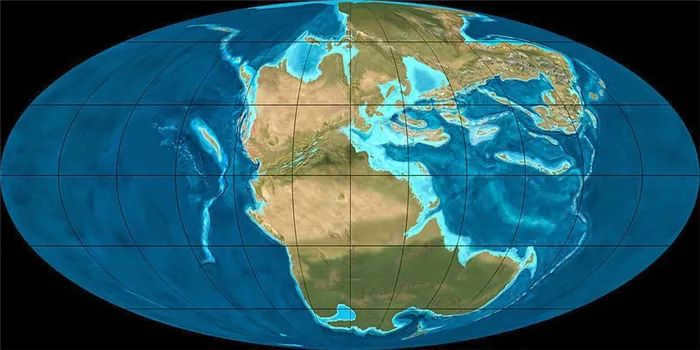
The Triassic Period was characterized by the formation of a single massive supercontinent known as Pangaea, surrounded by the vast Panthalassa ocean. Unlike the present day, there were no polar glaciers during this time, and the equatorial region experienced scorching heat and arid conditions, with powerful monsoons. It is estimated that the average temperature across Pangaea exceeded 37.7 degrees Celsius. The northern region, which corresponds to modern-day Eurasia, and the southern region, comprised of Australia and Antarctica, were comparatively wetter.
Terrestrial life in the Triassic Period
In the pre-Permian era, amphibians were the dominant species. However, in the Triassic period, reptiles, particularly archosaurs and terrapedes (“animal eaters”), became more prevalent. The reason behind archosaurs surpassing their “animal” counterparts, the terrapedes, is still uncertain. Archosaurs gradually evolved from the Middle Triassic and gave rise to the first true dinosaurs, such as Eoraptor and Herrerasaurus. Conversely, some archosaurs took a different evolutionary path and developed into the first pterosaurs (Eudimorphodon) and a variety of primitive crocodiles, some of which walked on two legs and consumed plants. Meanwhile, the therapsids experienced a gradual decline in size. In the Late Triassic, the first mammals emerged, including Eosostrodon and Spinoconodon, which were small in size, comparable to that of a mouse.
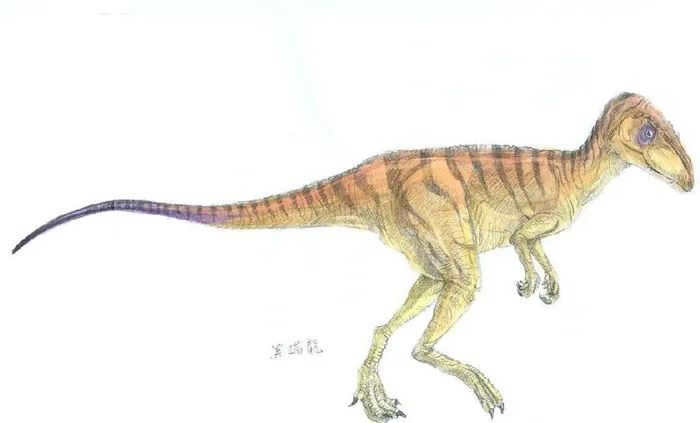
Herrerasaurus, one of the earliest dinosaurs
Marine life during the Triassic period
During the Permian extinction, which devastated the oceans, the Triassic era provided favorable conditions for the emergence and evolution of the first marine reptiles. These included not only unique and uncategorized genera like Placodus and Notosaurus, but also a variety of plesiosaurs and ichthyosaurs. Some ichthyosaurs grew to immense sizes, like Sonisaurus, measuring 15 meters long and weighing approximately 30 tons! The expansive Panthalassa ocean gradually became home to new species of fish, as well as primitive creatures such as corals and cephalopod mollusks.

In the Triassic era, the presence and extent of vegetation was not as widespread and abundant as it was in the subsequent Jurassic and Cretaceous periods. Nonetheless, terrestrial vegetation did exist in abundance. The prominent plant groups during this time included cycads, ferns, trees resembling ginkgo, and gymnosperms. A possible explanation for the absence of large herbivores, such as the later brachiosaurs, during this period is the insufficient supply of vegetation to sustain them.
Triassic-Jurassic extinction
The relatively lesser-known mass extinction that occurred between the Triassic and Jurassic periods was not as significant as the previous extinctions during the Permian-Triassic and Cretaceous-Triassic periods. Nevertheless, multiple marine reptile genera, amphibians, and certain branches of archosaurs disappeared during this time. The exact cause of this extinction event remains uncertain, as it could have been a result of heightened volcanic activity, global cooling of the climate, a meteorite impact, or a combination of these factors.
We owe our understanding of ancient creatures, particularly dinosaurs, to the efforts of professional and amateur scientists who have unearthed numerous remains of extinct organisms over the course of the past two centuries.
Enormous Fungi on Our Planet

The Earth used to be inhabited by enormous fungi
Around 400 million years ago, trees stood at a height equivalent to a human’s waist. Most of them were just a meter tall, and other plants were not much larger in size – unlike mushrooms. At some point in the history of our planet, pioneer mushrooms were widespread, outnumbering any other living organism.
The stems of these mushrooms could reach up to eight meters in height and one meter in width. Although this may not seem taller or thicker than many present-day trees, during that time they were the largest plants on Earth, surpassing all others in height by 20 feet.
The skies of Earth had a hue of orange, while its oceans were tinged with green.
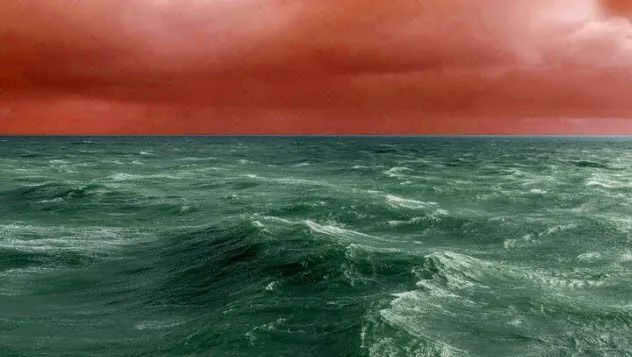
That’s more of a unique picture.
The color of the sky was not always blue. It is believed that approximately 3.7 billion years ago, the oceans had a green hue, the continents were dark in color, and the sky appeared bright orange.
During that time, the Earth had a different composition, and it is likely that the colors were also different. The oceans appeared green due to the presence of dissolved iron formations, which released a green rust similar to the color of a rusty copper coin. The continents were black because they were covered in cooled lava and did not have any plant life.
Article on the topic: A comprehensive guide to MegaFon’s “Additional Number” service, including detailed instructions on how to connect or disconnect. Learn how to use a virtual Megafon SIM card.
The color of the sky was not always blue. In the present atmosphere, there is an abundant amount of oxygen, but 3.7 billion years ago, it was quite scarce. The sky was primarily composed of methane, resulting in an orange hue when sunlight penetrated the methane atmosphere.
The odor of the Earth resembled rotten eggs
When scientists speculate about the characteristics of a particular planet, their assumptions are not solely based on guesses and theories. They are almost certain about the past smell of the planet. If someone were to smell the air 1.9 billion years ago, they would unmistakably detect the stench of rotten eggs.
This is due to the presence of gaseous bacteria in the oceans that consumed the salt in seawater. As a result, the bacteria released hydrogen sulfide, filling the air with the distinct odor associated with eggs.
Scientists are currently working on finding ways to address the situation. Let’s be honest – there are organisms that release hydrogen sulfide into the atmosphere every day. It could be said that the world in the past had an unpleasant odor.
If you’re interested in staying up to date with science and technology news, make sure to subscribe to our Google News and Yandex.Zen channels to ensure you don’t miss any updates!
The mushrooms had trunks that were eight meters tall and one meter wide. Although they may not have been as tall or thick as some modern trees, they were the largest plants on Earth at that time, surpassing all others in height by 20 feet.
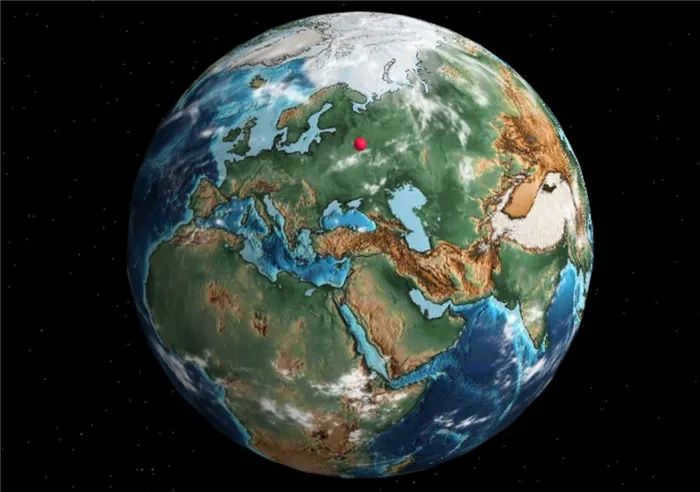
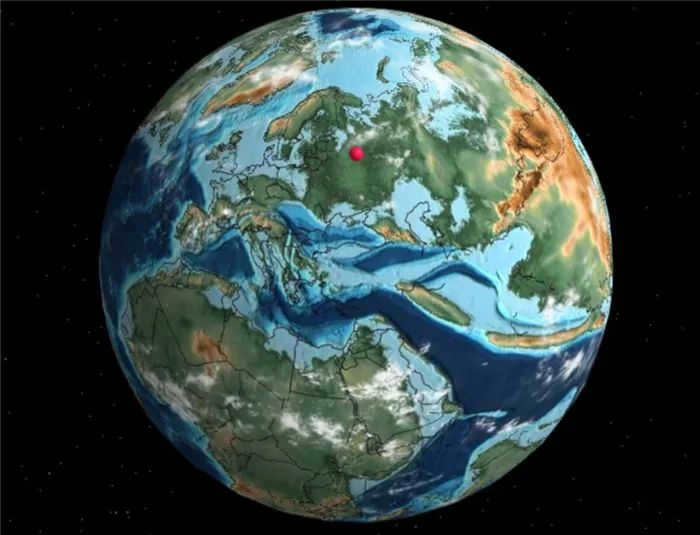
During that period, the Yamalo-Nenets Autonomous District had water in its soil, which is not the case today. The landscape of the Arabian Peninsula, as well as the territories of Iran, Iraq, Turkey, and other nearby countries, had a distinct appearance.
What is the method for locating my city?
